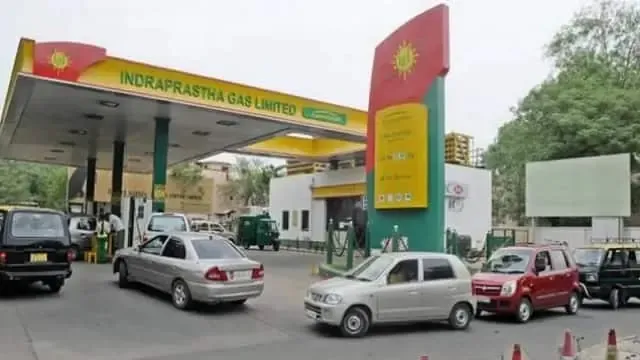Crisil Report: India's CNG Vehicle Numbers Soar to 7.5 Million Amid Green Initiatives

Synopsis
Key Takeaways
- Projected annual sales of CNG vehicles: 1.1 million units.
- Total CNG vehicles in India: 7.5 million, up from 2.6 million.
- Expansion of CNG infrastructure to over 7,400 filling stations.
- Passenger vehicle penetration increased to 15-16%.
- Commercial vehicle segment penetration at 10-11%.
New Delhi, Feb 19 (NationPress) The annual domestic sales of Compressed Natural Gas (CNG) vehicles are projected to hit 1.1 million units by the conclusion of the current fiscal year, propelled by the government's persistent drive for cleaner energy sources, as indicated by a recent Crisil report published on Wednesday.
This surge will elevate the total number of CNG vehicles in India to 7.5 million, representing a threefold increase from 2.6 million in fiscal 2016, resulting in a Compound Annual Growth Rate (CAGR) of approximately 12 percent, the report reveals.
The swift adoption has been supported by the growth of the CNG infrastructure, with the number of filling stations projected to expand to over 7,400 from 1,081 in fiscal 2016, marking a CAGR of 24 percent.
Furthermore, increasing sales of CNG passenger vehicles have boosted their share in the overall passenger vehicle market to 15-16 percent by the end of this fiscal year, up from 5.6 percent in fiscal 2016.
The availability of over 30 CNG car variants, compared to single digits in previous years, catering to a wide range of consumer preferences, has further accelerated this trend.
The commercial vehicle sector is also witnessing growth, with options providing notable cost savings, as penetration currently stands at 10-11 percent.
Additionally, the introduction of CNG options has fueled growth in the two-wheeler segment, as stated in the report.
Nevertheless, the three-wheeler segment, which currently holds a penetration rate of 28-29 percent, faces competition from Electric Vehicles (EVs), according to the report.
The consumption of CNG has risen alongside the increasing sales of CNG vehicles, with a CAGR of approximately 13 percent anticipated between fiscal years 2016 and 2025.
The expansion and distribution of CNG infrastructure are evident, with the share of the top five states decreasing to 55 percent in fiscal 2025 from over 90 percent in fiscal 2016, as newer geographical areas gain importance, the report notes.
Congestion at filling stations is also expected to lessen, with the ratio of vehicles per station dropping by about half since fiscal 2016, thereby improving customer experience and the operational efficiency of CNG stations.
Looking ahead, the growth of CNG infrastructure in cities like Chennai and tier-II cities is likely to sustain sales of CNG and, consequently, CNG vehicles, the report emphasizes.
However, the report also cautions that the development of the CNG market could be hindered by challenges such as low availability of affordable domestic natural gas and increasing competition from alternative fuels.
Moreover, the recent reduction in the Administered Pricing Mechanism (APM) gas allocation for CNG—dropping from 68 percent to 51 percent in October 2024, followed by a further decrease to 37 percent in November 2024 (later adjusted to 50 percent in January 2025)—has introduced uncertainty and raised the gas sourcing costs for city gas distributors, the report added.
APM gas allocation refers to the supply of natural gas to city gas distributors (CGD) at a regulated price. This gas is utilized for essential services like piped natural gas (PNG) and compressed natural gas (CNG).









